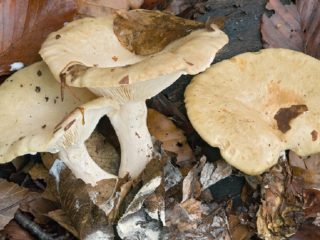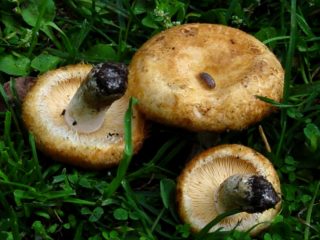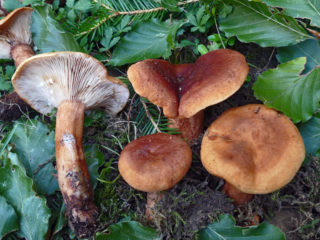Content
The oak milky (Lactarius quietus) is a lamellar mushroom belonging to the russula family, the genus Millechnikov. Its other names:
- the milkman is neutral;
- the milkman or the milkman is calm;
- oak mushroom;
- podole, poddubnik.
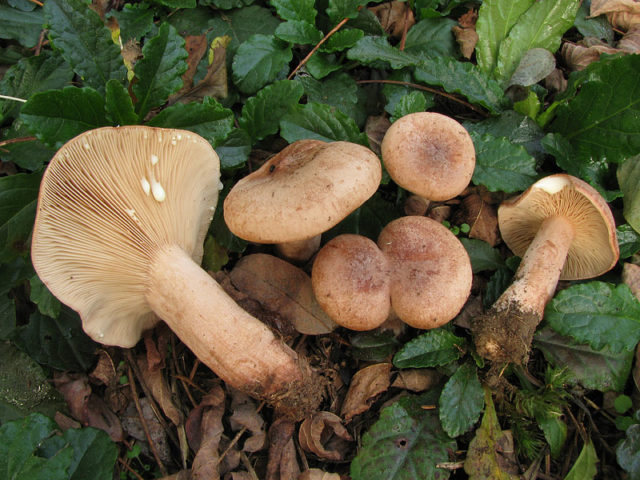
The family of oak milky (lactarius quietus) in a forest glade
Where the oak milkman grows
Oak mushroom is widespread in the temperate climatic zones of the Northern Hemisphere - in Russia, in the Far East, in Europe, in Canada. It settles mainly near oak trees, in deciduous forests. The mycelium bears abundant fruit from June to September-October. Loves shaded places, grassy forest glades, neighborhood with old trees. It grows in large groups, occupying vast areas.
What does an oak milkman look like?
The neutral milky mushroom has a neat appearance, a detailed description of its structure and a photo:
- Only the fruiting bodies that have appeared resemble miniature bolts with round smooth caps. The edges are noticeably bent downward; a small undulating depression and a tubercle are visible in the center. As it grows, the cap becomes umbrella-straight, the depression is more noticeable, of a rounded cup-shaped shape. In overgrown specimens, the edges are straightened, becoming almost straight, the cap takes on a funnel-shaped appearance. The surface is dry, slightly rough or smooth. The skin adheres tightly to the pulp.
- The color of the cap is uneven. The middle is darker, rounded-spotted, sometimes concentric stripes are visible. The color is creamy-beige, brown-ocher, reddish, shades of milk chocolate, slightly pinkish. The diameter can be from 0.6 to 5-9 cm.
- The plates of the hymenophore are even, thin, slightly descending along the pedicle. The color is beige, white-cream, reddish with brownish spots. The pulp is thin, breaks easily, releasing white milky juice. Its color is creamy; over time, the scrapping acquires a pinkish tint. The spores are light, almost white in color.
- The stem is straight, thin, cylindrical, slightly thickened towards the root. Its diameter ranges from 0.3 to 1 cm, length - 0.8-5 cm. Smooth, dry, often covered with a grayish-white down. The color is similar to the cap, slightly darker from the ground. The pulp is easy to break and cut, the structure is longitudinally fibrous, hollow inside.
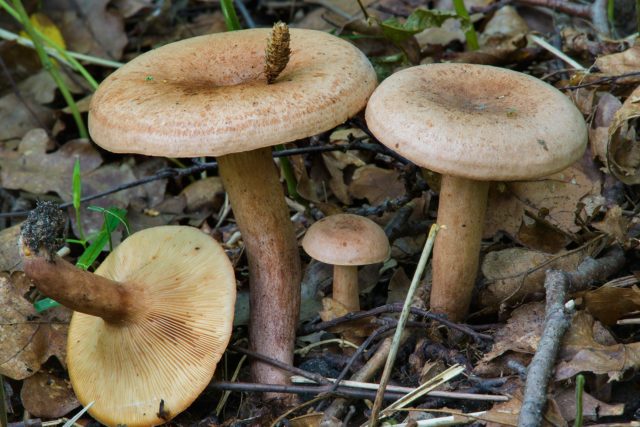
Calm milk mushrooms are clearly visible against the background of the forest litter, since their dry caps do not collect a variety of debris
Is it possible to eat oak milkman
The neutral milk mushroom is classified as conditionally edible mushroom. Its pulp has a specific herbal aroma and a neutral taste. When soaked, these fruiting bodies produce wonderful pickles.
False doubles of the calm milkman
In rare cases, there is a similarity of these mushrooms with representatives of its own species. To distinguish the oak milkman from the twins, you should see their photo and description.
Milky milky. It is classified as an edible mushroom of the IV category. Differs in a more saturated, burgundy-brown color of the cap.
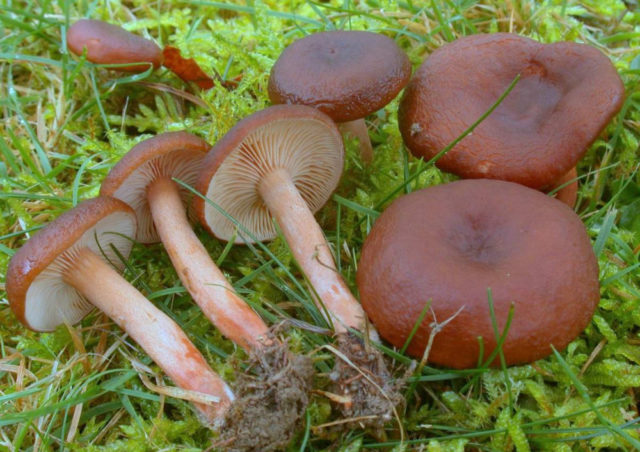
In mature specimens, the surface of the cap becomes pimply and bends in waves.
Dark alder milky (Lactarius obscuratus). Inedible, can cause serious gastrointestinal upset. It is distinguished by a thin, spread-umbrella-shaped cap, a dark brown or reddish-black leg, a rich olive or brownish hymenophore.

This species forms mycorrhiza with alder
Serushka or gray milkman. Conditionally edible. Differs in caustic milky juice, purple-lilac color of the cap and light leg.
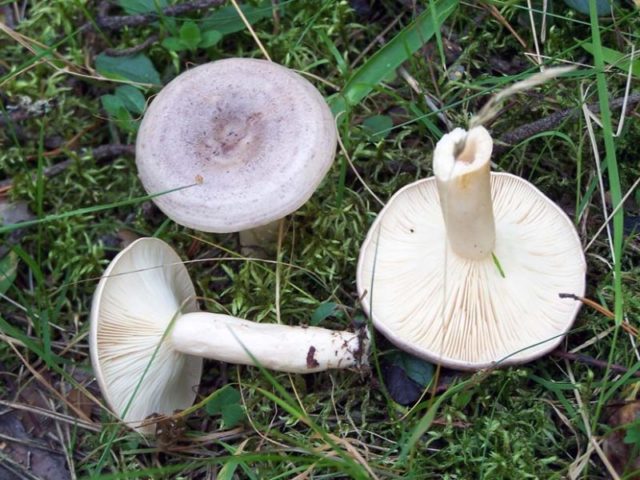
Plates of a lump of gray-lilac have a delicate white-cream shade
Rules for collecting a neutral milkman
The collection of these fruiting bodies does not require special skills. If a family of several closely knit specimens is found, you should carefully look around: most likely, there will be more within 1-2 m. Babies often hide completely in the grass, looking out with the very tip of the cap.
Mushrooms should be cut at the root with a sharpened knife or carefully unscrewed from the nest. Spoiled, moldy, too overgrown poddubniki should not be taken. In order to bring the harvested crop home and not crush, the mushrooms should be laid in rows, separating the legs, with the plates facing up.
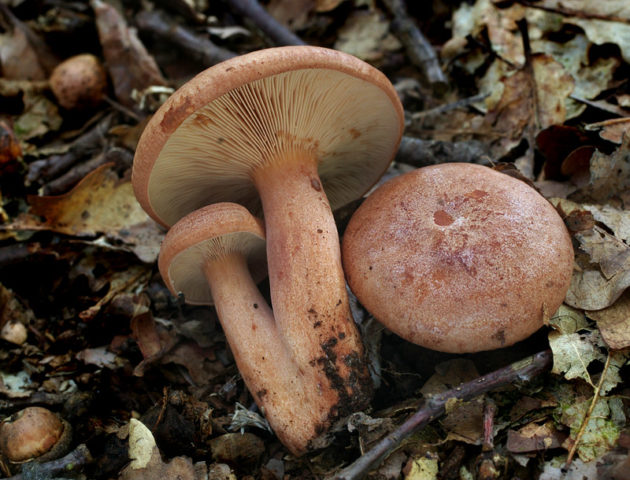
The legs of the oak lactarius often grow together, forming a single organism.
How to cook oak milky mushroom
The oak milky is suitable exclusively for salting, it is not used in any other form. These fruiting bodies require preliminary soaking:
- sort out mushrooms, clear of earth and litter;
- rinse, place with the plates upwards in an enamel or glass dish;
- pour cold water, cover with an inverted lid or dish, put a jar or bottle of water as oppression;
- soak, changing the water twice a day, for at least 2-3 days.
At the end, drain the water, rinse the mushrooms. They are now ready for further cooking.
Cold salted oak miller
This recipe is universal for all edible lactarius species.
Required Ingredients:
- oak milkman - 2.4 kg;
- salt - 140 g;
- garlic - 10-20 cloves;
- horseradish, cherry or currant leaves (which are available) - 5-8 pcs.;
- dill stalks with umbrellas - 5 pcs.;
- a mixture of peppers to taste.
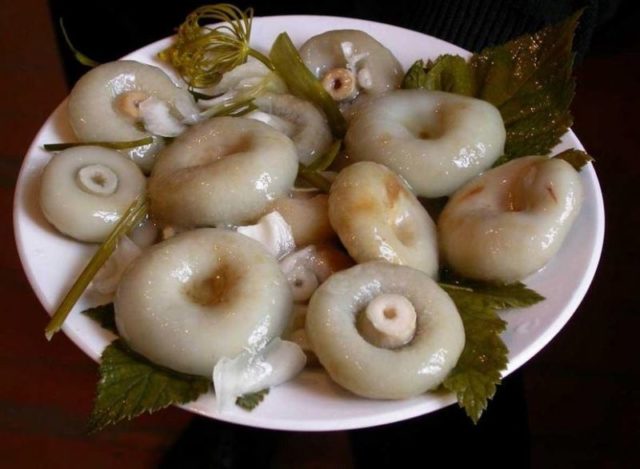
An appetizing snack that will delight all family members
Cooking method:
- Put the mushrooms in a wide enamel bowl on the leaves with the plates facing up.
- Sprinkle each layer 4-6 cm thick with salt and shift with leaves, garlic, spices.
- Finish with leaves, press down with an inverted lid, a wooden circle or a plate, put oppression on top so that the juice that comes out completely covers the contents.
After 6-8 days, mushrooms salted in this way can be transferred to jars and sealed with lids, putting them in a cool place for storage. In 35-40 days, a great snack will be ready.
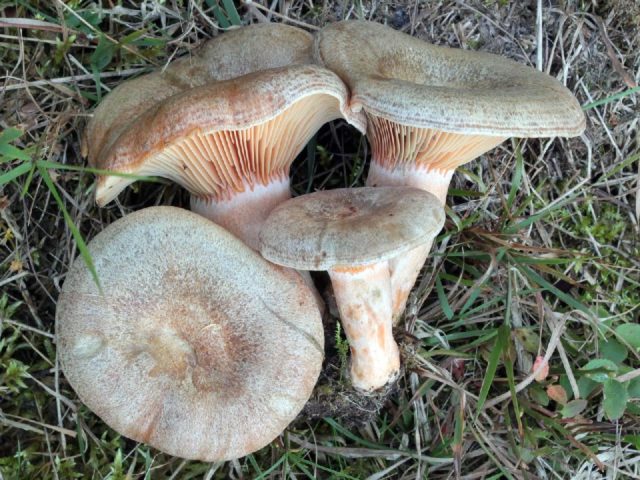
Flabby, overgrown, or moldy specimens should not be eaten.
Conclusion
The oak milky forms mycorrhiza exclusively with oak, so it can be found only in deciduous forests. It is ubiquitous in the temperate latitudes of the Eurasian continent. Grows in large groups from July to October. In Russia, these fruiting bodies are salted for the winter, in Europe they are considered inedible. Millechnik oak is distinguished by the mild taste of the juice that stands out and the original hay smell of pulp, so it is quite easy to distinguish it from its counterparts. These mushrooms make a good harvest for the winter.


